Introduction
Traditional storage methods, such as pallet warehouses, which involve storing goods on standard pallets in static racks, are increasingly being replaced by modern solutions. They allow better use of available space, increase operational efficiency and improve safety in warehouses.
High-bay racking systems
High-bay racking systems allow goods to be stored at heights as high as 18 meters, making maximum use of vertical warehouse space. These systems, often supported by forklifts with special designs, provide quick and efficient access to stored goods. Forklifts such as the EKX 4 and 5 series, equipped with a rotating fork carriage and maintenance-free synchronous reluctance motors, make it possible to operate at great heights with high energy efficiency and precision.
Automatic storage and retrieval systems (AS/RS)
Automated Storage and Retrieval Systems (AS/RS) are technological solutions that consist of racking operated by automated trucks or robots. Designed for efficient storage and retrieval of goods, these systems can significantly increase the operational efficiency of a warehouse, minimizing the time required for these operations and reducing the risk of human error. AS/RS use precise algorithms and advanced sensors to manage goods, and their integration with warehouse management systems (WMS) allows full automation and optimization of warehouse processes.
Automated Warehouses (Smart Warehouses)
Automated warehouses, also known as smart warehouses, use advanced technologies such as artificial intelligence (AI), the Internet of Things (IoT) and robotics to optimize warehouse operations. Automated Guided Vehicles (AGV) systems are used to transport goods, while drones perform inventory and inventory monitoring. AI and IoT allow real-time data collection, analysis and processing, leading to full automation of processes, significantly improving efficiency and reducing operational costs.
Warehouse Management Systems (WMS)
Warehouse Management Systems (WMS) are software that allow efficient management of warehouse operations. WMS allow tracking and managing all warehouse operations in real time, from goods receipt to shipment. WMS functions include inventory management, storage optimization, staff scheduling and integration with ERP (Enterprise Resource Planning) systems. With a WMS, it is possible to increase the accuracy of warehouse operations, reduce costs and improve overall efficiency.
RFID and IoT technologies
RFID (Radio-Frequency Identification)
RFID, or Radio-Frequency Identification, is a technology that enables automatic identification and tracking of goods using radio waves. The RFID system consists of tags (labels) equipped with chips and antennas, and readers that send radio signals to the tags. This makes it possible to remotely read the information stored on the tags, significantly increasing the accuracy and efficiency of warehouse operations by eliminating the need to manually scan barcodes.
Internet of Things (IoT)
The Internet of Things (IoT) is a network of connected devices and sensors that collect and exchange data in real time. In the context of warehousing, IoT allows for the monitoring and management of various aspects of warehouse operations, such as inventory levels, environmental conditions (e.g. temperature and humidity) and the location of goods. Integrating IoT with WMS systems enables better inventory management and optimization of logistics processes, making warehouses more responsive and efficient.
Cloud Storage Management
Cloud storage, or warehouse management through cloud-based systems, is becoming increasingly popular in modern warehouses. These systems allow access to warehouse data from anywhere, anytime, which increases the flexibility and scalability of warehouse operations. Cloud management also offers data analytics to help optimize warehouse processes and anticipate future needs. Cloud-based management systems also allow for easy integration with other ERP and WMS systems, improving collaboration and coordination across the supply chain.
Warehousing at SIM Gdynia
At SIM Gdynia, we offer comprehensive warehousing services that use state-of-the-art technology to ensure maximum efficiency and safety. Our EKX 410 Series 4 forklift, equipped with a rotating fork carriage and maintenance-free synchronous reluctance motors, operates at heights of up to 11.5m, allowing more efficient use of warehouse space. We also offer comprehensive management of goods, from receipt to storage to picking and shipping.
Summary
Modern warehousing methods, which include high-bay racking systems, automated storage and retrieval systems (AS/RS), automated warehouses, warehouse management systems (WMS), RFID and IoT technologies, and cloud storage, significantly improve the efficiency, safety and flexibility of warehouse operations. These solutions make better use of available space, reduce operating costs and improve overall warehouse efficiency.
